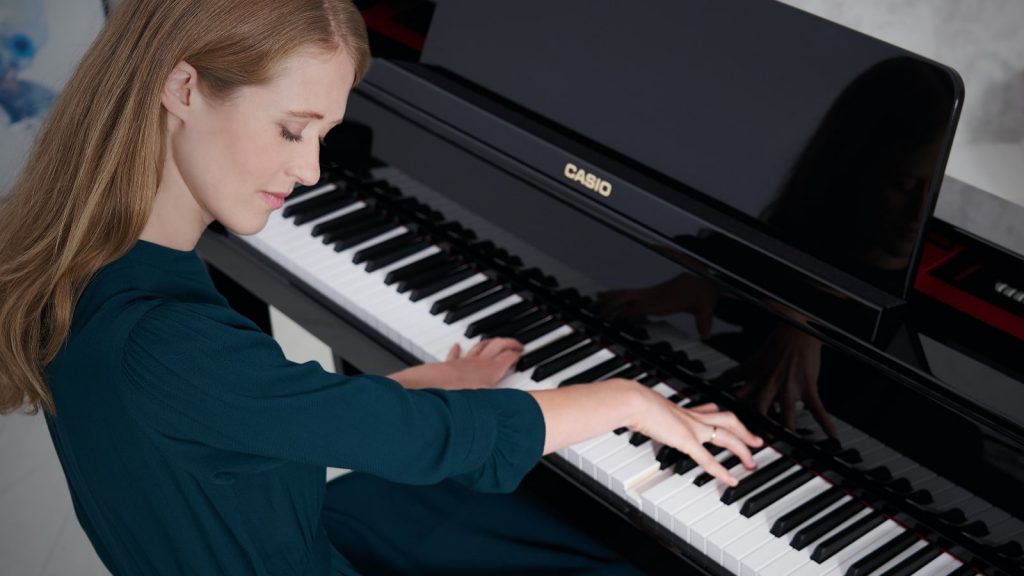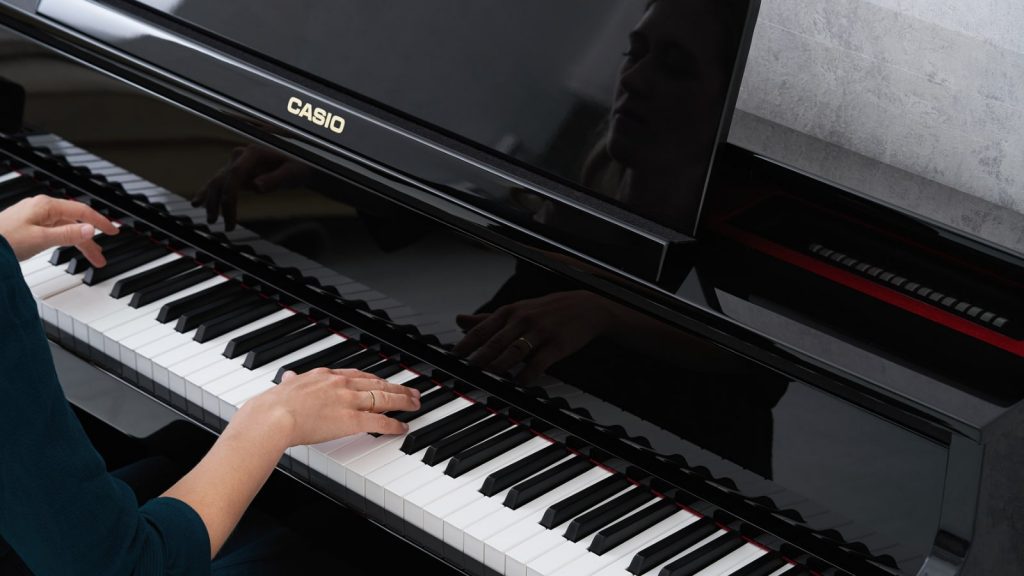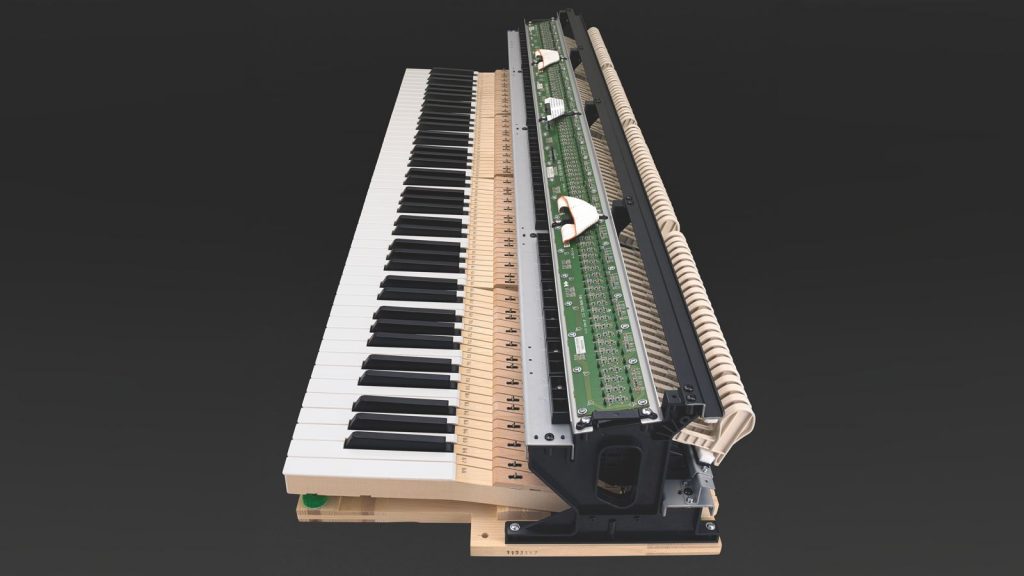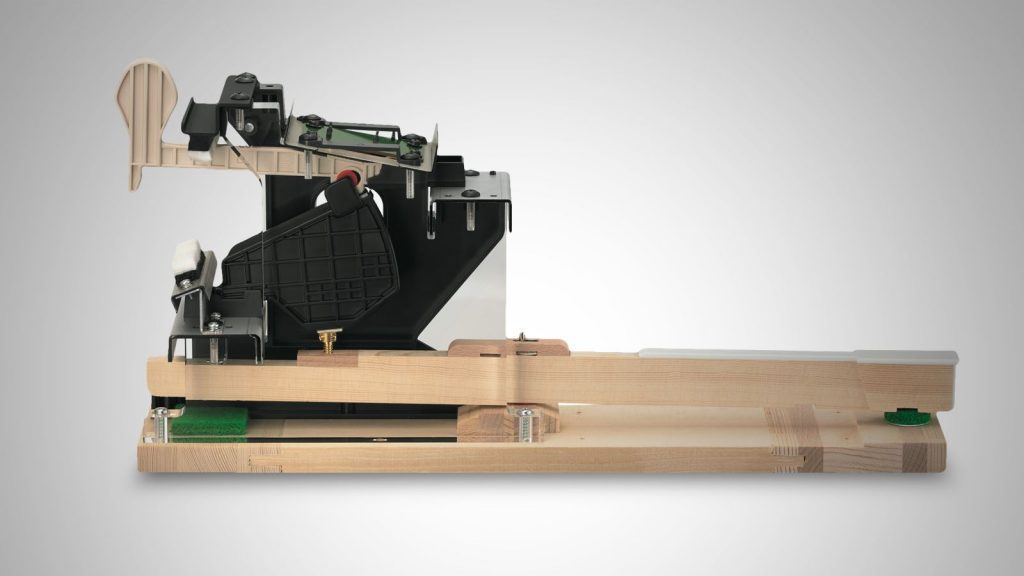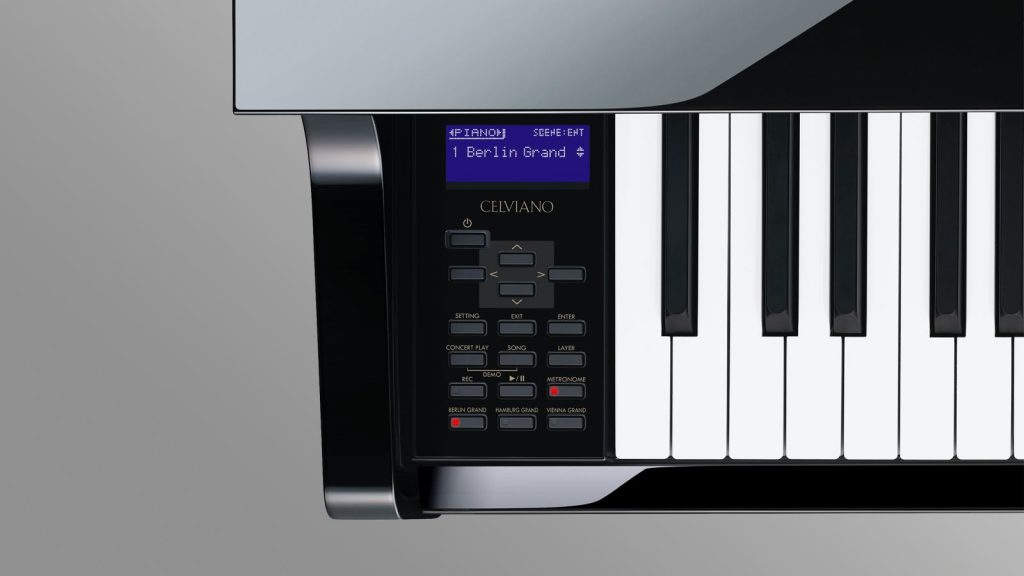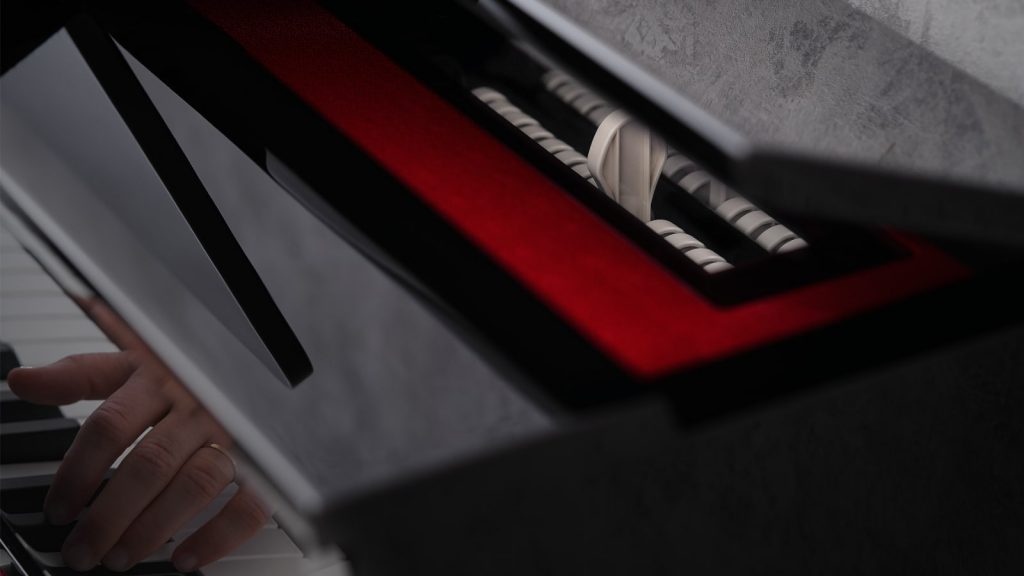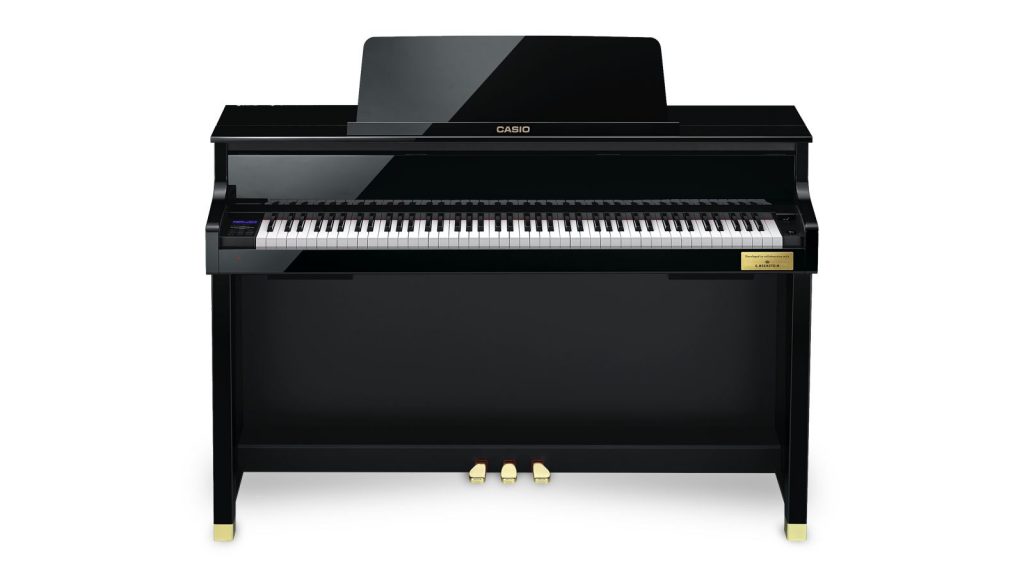Plenty of Choice for Splits and Layers
The remaining 26 sounds of the GP-510 are divided into six groups: “”Various Piano”, “Electric Piano”, “Harpsichord/Vibes”, “Strings”, “Organ” and “Bass”. The first bank offers additional acoustic piano sounds similar to those found in other Celviano digital uprights. These bright, lively sounds are perfect for rock and pop. Moreover, the bank includes a dance piano and a piano pad layer.
The electric pianos offer three high-quality Fender Rhodes variants, as well as a nice Wurlitzer and FM piano sound. The strings offer a natural ensemble with long and short attacks, as well as a synth pad. The selection is completed by two pipe organs, four universal electric organs, a harpsichord, a vibraphone, a bass guitar, and a double bass, the latter of which has a variant with ride cymbals. While these additional sounds don’t quite match the quality of the three grand pianos, they still sound appealing and are a reasonable addition.

